How to thrive in the gym with Endometriosis
March marks Endometriosis Awareness Month, if you haven’t heard of it before, Endometriosis is a condition where tissue similar to the lining of the womb is found in other parts of the body; most commonly in the pelvic region but it has been found throughout the body. There are currently 1.5 million in the UK living with it. Being a fitness space for those that identify as female or non-binary it is natural that discussions around women’s health issues are a hot topic within our community. This is why we thought it would be great to hear from Menstrual Wellbeing Coach, Katherine Irene about how you can thrive in the gym with Endometriosis.
Endometriosis is a spectrum condition that affects those living with it differently, according to Endometriosis UK the main symptoms include; chronic pain, heavy bleeding, fatigue, and pelvic pain. There is a whole range of other symptoms that can affect the quality of life, depending on the type of Endometriosis and the length of time it has been there for.
Living with Endometriosis can be incredibly difficult, there is currently no cure for it and the treatment options aren’t always effective in alleviating symptoms. Movement in all its form can help someone living with Endometriosis for a number of reasons, but it can be a daunting experience.
Recent research from America shows that there is no bad exercise for the condition. This is really helpful because social media can be so noisy around the topic of Endometriosis and exercise, with lots of so-called experts telling us how to move our bodies with no real scientific backing. So hopefully, clarifying that there is no bad exercise for you should start to build your confidence. If you are just starting out in fitness, choose something that you think you’ll enjoy and give it a try. If you’re a gym regular keep building on the routine you’re enjoying. Essentially the best movement for you is the one you really enjoy.
As with exercise, there is also no ideal diet for Endometriosis, it isn’t a one size fits all situation here. In some cases, Endometriosis can cause IBS-type symptoms which can be exacerbated by certain foods and or by stress. Keeping a food and symptom diary can help you to identify any potential food triggers you might be experiencing. Nutrition is a really personal topic and what suits you won’t suit someone else, getting support from a professional can support you within this. The key takeaway here is to choose what works best for you, your individual needs, your goals, and your lifestyle.
Wherever you are in your fitness journey and your menstrual lifespan really getting to grips with what’s happening in your body is really key. By that, I mean cycle tracking, including exercise within that can really help you to thrive within the gym. Understanding what feels good on different days, which classes work well at different stages of your cycle, and when you might need to make some adjustments to workouts. Endometriosis can be unpredictable but this will allow you to take some of the control back. With consistent tracking, you can reach a point where you know when to push through fatigue and when you need some extra rest.
Exercising while on your period can help ease period cramps. But it isn’t for everyone, just because period product adverts show women playing tennis crisp white kit and swimming while bleeding, doesn’t mean you have to. Some write off those few days but if you push through there are some things that might help make life easier for you.
Think about your gym kit, are you self-conscious working out on your period? Period pants or period leggings could help you feel more confident on those days
Pain relief patches and CBD can help alleviate the pain until those endorphins kick in
You might need extra rest between sets for those few days
Recovery is really key during this time; stretching, gentle walking, bubble baths, meditation can all be really useful here
Stay hydrated
The StrongHer coaches want you to be the best version of yourself and are totally here to help you get there. If endometriosis is a barrier to getting you there, don’t be afraid to reach out to them. If you need to go lighter in weights, have a bit more rest between sets, or need to make adjustments to exercise, be honest about it; you wouldn’t continue to run on a broken foot, you’d train arms for a bit instead.
Have a quiet word with your coach before a class, ‘would it be ok if I switched burpees exercise for lunges exercise just for today as I’ve got my period’. Be honest about your condition, ‘I have Endometriosis and this is how it impacts me’. They are here to help support you in all areas of fitness, check-in about ideas to support recovery or supplements that might help.
The statistics say that 1 in 10 women (or that assigned female at birth) have Endometriosis so the chances of you being the only one at StrongHer with Endometriosis are really slim, as lonely as it may feel you absolutely aren’t alone!
If you feel like you need some additional support, feel free to reach out to me. You’ll find me on Instagram @katherineirenecoaching or over at www.katherineirenecoaching.co.uk. I am a Menstrual Wellbeing Coach. I work with clients to support them to make their periods their superpowers, I work with all period experiences including Endometriosis – I also have it myself!
